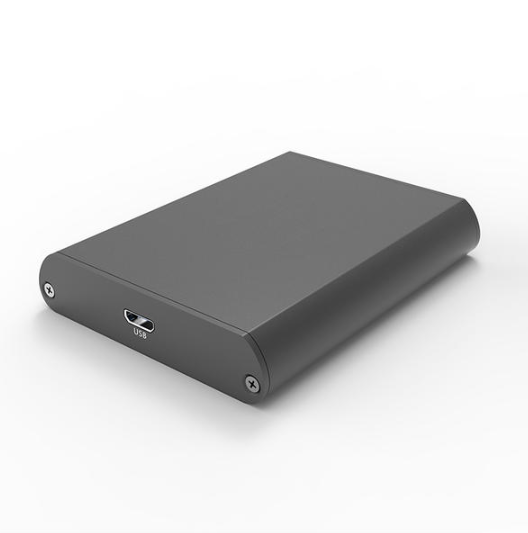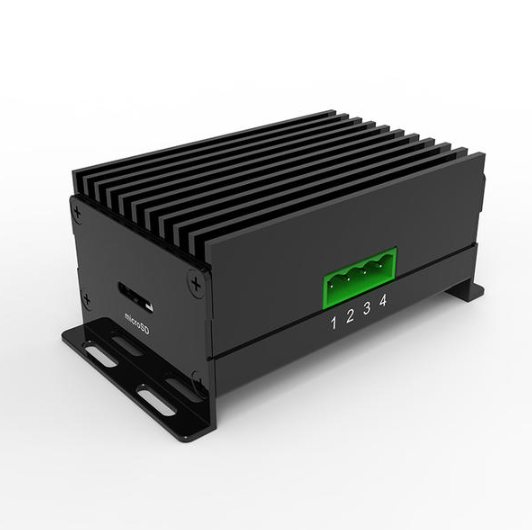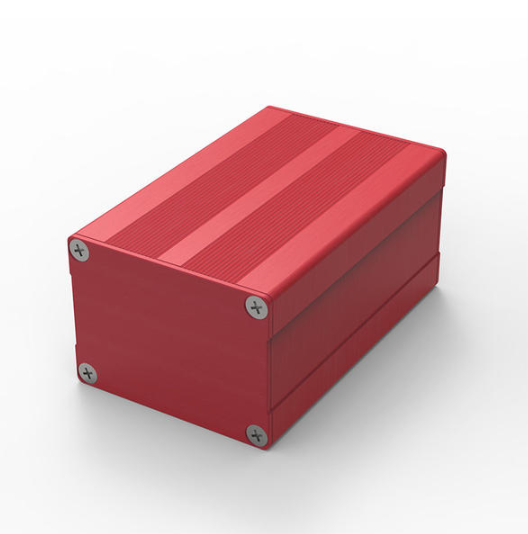In the world of modern manufacturing and electronics, the importance of robust, customized housing for sensitive components cannot be overstated. Enter the realm of extrusion enclosures - a cornerstone in providing protection, functionality, and adaptability across an array of industries.
In this post, the author would give a full introduction to the extrusion enclosure.
In this post, the author would give a full introduction to the extrusion enclosure.
What is Extrusion Enclosure?
An extrusion enclosure is a type of casing or housing used in electronics and manufacturing. It's created through a process called extrusion, where materials such as aluminum or plastic are pushed through a die to create a specific shape or profile.
These enclosures are often used to house electronic components, providing protection, support, and sometimes heat dissipation. They come in various shapes and sizes, offering flexibility in design and customization for different applications in industries like electronics, automotive, aerospace, and more. The extrusion process allows for the creation of complex shapes with consistent quality, making these enclosures popular in various manufacturing settings.
These enclosures are often used to house electronic components, providing protection, support, and sometimes heat dissipation. They come in various shapes and sizes, offering flexibility in design and customization for different applications in industries like electronics, automotive, aerospace, and more. The extrusion process allows for the creation of complex shapes with consistent quality, making these enclosures popular in various manufacturing settings.
What Are The Applications of The Extrusion Enclosure?
Extrusion enclosures find applications across a wide array of industries due to their versatility, durability, and customizable nature. Some key applications include:
●Electronics and Electrical Components
These enclosures are commonly used to house circuit boards, control panels, power supplies, and other electronic components. Their ability to dissipate heat makes them ideal for devices prone to overheating.
●Automotive Industry
Extrusion enclosures are employed in vehicles for housing control units, sensors, and other electronic modules. They offer protection against environmental factors and vibrations while maintaining a lightweight design.
●Aerospace and Aviation
In this sector, extrusion enclosures are utilized for avionics, instrumentation, and control systems due to their lightweight properties, resistance to harsh conditions, and ability to withstand varying temperatures.
●Industrial Machinery
Enclosures are used in machinery to protect sensitive components from dust, moisture, and other contaminants. Their customization options allow for specific configurations to accommodate different machinery setups.
●Telecommunications
Enclosures are critical in housing networking equipment, routers, switches, and other communication devices. They provide protection while allowing for heat dissipation necessary for efficient operation.
●Renewable Energy Systems
Extrusion enclosures are employed in solar power systems, wind turbines, and other renewable energy applications to protect electrical components and ensure their reliability in diverse environmental conditions.
●Medical Devices
Enclosures are used in various medical equipment like monitoring devices, diagnostic instruments, and medical imaging systems to protect delicate electronics and ensure sterility.
●Consumer Electronics
From computer peripherals to consumer gadgets, extrusion enclosures play a role in protecting and organizing internal components while maintaining an aesthetic appeal.
●Outdoor and Harsh Environments
Due to their corrosion resistance and durability, these enclosures are employed in outdoor applications such as outdoor lighting, signage, and monitoring systems.
●Security and Surveillance
Enclosures are used to protect surveillance cameras, sensors, and security system components both indoors and outdoors.
What Are The Advantages of The Extrusion Enclosure?
The advantages of extrusion enclosures stem from the unique properties and manufacturing processes they employ. In this section, the author would list the main advantages of the extrusion enclosures.
●Tailored Design
The ability to create intricate shapes and configurations allows for tailored designs that precisely fit the requirements of the components they house. This customization ensures optimal protection and functionality.
●Material Versatility
The choice of materials, such as aluminum or various plastics, offers different characteristics like conductivity, weight, and durability. This flexibility allows designers to select materials best suited for the enclosure's intended use.
●Economical Production
Extrusion is a cost-effective method for producing enclosures, especially when manufacturing in bulk. It reduces material waste and allows for efficient production runs, resulting in lower costs per unit.
●Thermal Management
Especially in aluminum extrusions, the material's natural thermal conductivity assists in dissipating heat generated by enclosed components. This property helps maintain optimal operating temperatures, critical for electronic devices' performance and longevity.
●Strength and Lightweight Nature
Aluminum extrusions, known for their strength-to-weight ratio, provide robust protection for components while keeping the overall weight of the product relatively low. This balance is crucial in industries where weight matters, such as aerospace or automotive.
●Modification Ease
Extrusion enclosures are easily machinable and can be drilled, cut, or further modified post-extrusion without compromising their structural integrity. This feature allows for adjustments or adaptations to accommodate changing component requirements.
●Resistance to Environmental Factors
Some extrusion materials, like anodized aluminum, offer inherent resistance to corrosion, making them suitable for outdoor or harsh environment applications without significant degradation over time.
●Aesthetic Options
The surface finish of extrusion enclosures can be enhanced through processes like anodization, painting, or powder coating. This customization ensures not just functional adequacy but also a visually appealing product.
These advantages collectively make extrusion enclosures highly sought-after across industries, offering a versatile solution that balances functionality, cost-effectiveness, and durability for various applications.
These advantages collectively make extrusion enclosures highly sought-after across industries, offering a versatile solution that balances functionality, cost-effectiveness, and durability for various applications.
Conclusion
Extrusion enclosures stand as a testament to the marriage of precision engineering and versatile functionality. Their role in safeguarding delicate components across a myriad of industries is indispensable. As industries evolve, so too will these enclosures, adapting to meet the ever-changing demands of technology and manufacturing.
In essence, extrusion enclosures are not merely protective shells; they represent the convergence of innovation and practicality, serving as the backbone of modern electronics and manufacturing.
In essence, extrusion enclosures are not merely protective shells; they represent the convergence of innovation and practicality, serving as the backbone of modern electronics and manufacturing.






